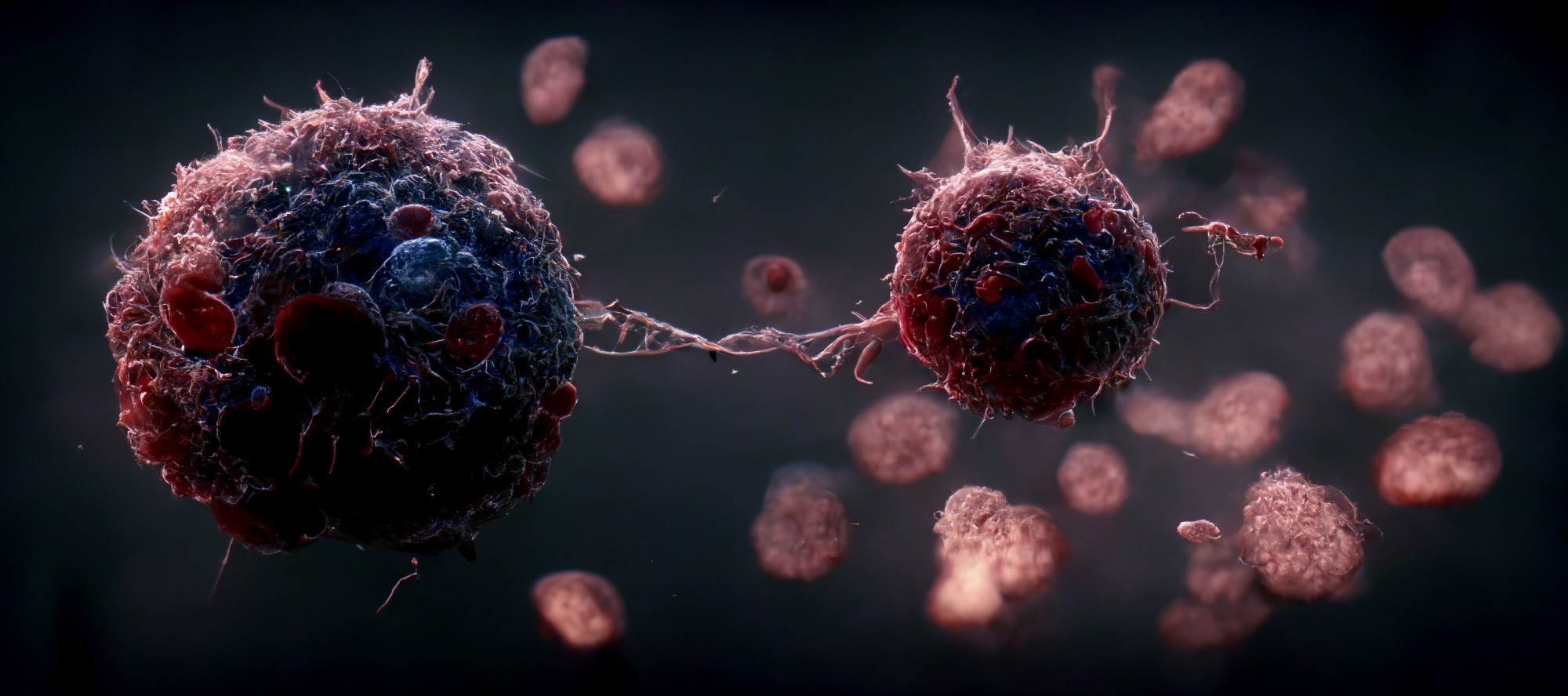A team of international scientists has recently characterized the structure of tumor necrosis factor receptor associated factor 6 (TRAF6) N-terminal domain for therapeutic purposes. This protein is a ubiquitin ligase that plays important roles in immune system regulation, cellular signaling, brain function, and tumor formation.
 Study: Structural Characterization of TRAF6 N-terminal for Therapeutic Uses. Image Credit: CI Photos/Shutterstock
Study: Structural Characterization of TRAF6 N-terminal for Therapeutic Uses. Image Credit: CI Photos/Shutterstock

 *Important notice: bioRxiv publishes preliminary scientific reports that are not peer-reviewed and, therefore, should not be regarded as conclusive, guide clinical practice/health-related behavior, or treated as established information.
*Important notice: bioRxiv publishes preliminary scientific reports that are not peer-reviewed and, therefore, should not be regarded as conclusive, guide clinical practice/health-related behavior, or treated as established information.
The study is currently available on the bioRxiv* preprint server.
Background
Tumor necrosis factor receptor-associated factors (TRAFs) are a group of zinc finger proteins that play essential functions in regulating immune and inflammatory systems. Specifically, these proteins are the central components of signal transduction through the tumor necrosis factor (TNF) receptor, interleukin 1/toll-like receptor (IL-1/TLR), and NOD-like receptor (NLR) superfamilies.
The most common structural features of TRAFs include a Really Interesting New Gene (RING) domain, zinc finger motifs, a coiled-coil domain, and a highly conserved C-terminal β-sandwich domain. The RING domain is required for the E3 ubiquitin ligase activity of TRAFs.
TRAF6 is a non-conventional E3 ubiquitin ligase with a unique receptor binding specificity. This protein comprises an N-terminal RING domain, multiple zinc finger motifs, and a C-terminal TRAF domain. Through the RING domain and zinc finger motifs, TRAF6 activates nuclear factor kappa B (NFkB), which in turn regulates a variety of cellular functions, including inflammatory responses, cell proliferation, differentiation, migration, and apoptosis (cell death).
TRAF6 is overexpressed in many cancers, including pancreatic, liver, lung, head and neck, breast, and colorectal cancers and melanoma. In addition, overexpression of this protein has been observed in several inflammatory, autoimmune, and neurodegenerative diseases.
Given the clinical significance of TRAF6 as a potential therapeutic target, scientists have characterized the structure of its N-terminal domain at atomic resolution. They have conducted structural characterization by using previously modelled structure of TRAF6 as a reference point.
Important observations
The structural analysis conducted at the cryogenic temperature revealed that the zinc interaction is the most important characteristic feature of TRAF6. A structural scaffold was provided by bivalent zinc ions around the region where the zinc fingers and RING domain fold.
These observations indicate that zinc plays a vital role in TRAF6 function and that the protein activity can be inhibited by altering the zinc interaction.
Overall structural characterization of the N-terminal region revealed the presence of a RING domain, three zinc finger motifs, and a linker region consisting of a single helix. The presence of a phenylalanine residue of the linker at the dimerization surface indicated that this region plays a role in N-terminal dimerization.
A detailed analysis of zinc finger motifs revealed that each finger has two beta-sheets and one alpha-helix and is composed of three cysteine residues and one histidine residue. The first and second cysteine residues and the third cysteine residue were located on the first and second loops, respectively. The histidine residue was located on the helix region. The distance between zinc and these interacting residues were conserved.
These observations indicate that the zinc finger motifs in TRAF6 N-terminal region possess a classical zinc finger pattern with two beta-sheets and one alpha-helix. However, unlike two cysteine-two histidine arrangement of a classical zinc finger, it has three cysteine residues and one histidine residue.
Regarding the zinc interaction pattern, the findings revealed that the cysteine residues interact with zinc through the side chain sulfur, whereas the histidine residue interacts with the side chain nitrogen.
The structural analysis of the RING domain revealed that it interacts with two bivalent zinc ions to form RING fingers. The RING domain can interact with DNA, indicating that TRAF6 has the ability to regulate DNA transcription.
The structural arrangements of N-terminal domains around the central zinc atom make TRAF6 a potential therapeutic target. As mentioned by the scientists, the disulfide bonds formed by cysteine residues as well as the zinc interaction, can be altered by reducing agents, such as dithiol compounds, to modulate the function of TRAF6.
Study significance
The study provides a detailed overview on the N-terminal domain organization and the zinc interaction pattern of TRAF6, which is a zinc finger protein involved in the pathogenesis of various cancer types, neurodegenerative diseases, and autoimmune and inflammatory diseases.
The scientists have previously discovered a compound named SN-1 with TRAF6 inhibitory potential. This compound, together with other zinc finger protein inhibitory small molecules, can be used clinically to modulate TRAF6 functions and manage various life-threatening diseases.

 *Important notice: bioRxiv publishes preliminary scientific reports that are not peer-reviewed and, therefore, should not be regarded as conclusive, guide clinical practice/health-related behavior, or treated as established information.
*Important notice: bioRxiv publishes preliminary scientific reports that are not peer-reviewed and, therefore, should not be regarded as conclusive, guide clinical practice/health-related behavior, or treated as established information.